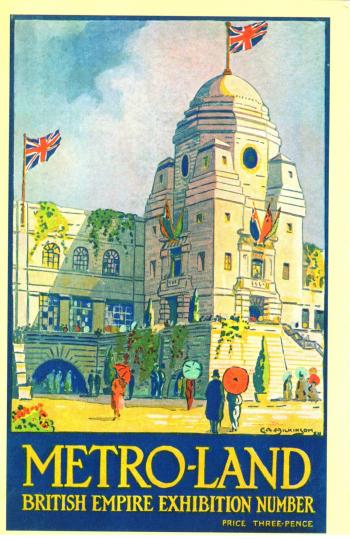British Empire Exhibition
A British Empire Exhibition had been proposed as early as 1902 to no avail and again in 1913. The original plan had fallen by the wayside due to the Russo-Japanese war in 1904 and World War I similarly scuttled the second attempt. However, by 1920 the British government had committed itself to a location namely Wembley Park. The object of the Exhibition was to strengthen what was perceived to be a weakening of the Empire made more evident in 1917 by Britain deciding to leave India. It was hoped that such a show of largesse would show the world at large that Britain was still a force to be reckoned with.
The Exhibition ran from April 1924 until October 1925. The Palace of Fine Arts, one of very many courtyards and halls within the exhibition contained historical room sets, as well as paintings and sculptures dating from the 18th century onwards. One of the 'stars' of the show was the Queen Mary’s Dolls House. During its 18-month run, 27 million visitors paid for admission. Top-tier artists from the past included George Stubbs, Johann Zoffany, George Cruikshank, Thomas Gainsborough, J. M. W. Turner, and Burne-Jones. Artists working into the 20th century who participated included Walter Sickert, W. P. Frith, Hubert von Herkomer, John Singer Sargent, Philip De László and Augustus John. 'Second-tier' artists who participated not only with actual exhibits but sometimes with designs for posters or murals included Thomas Ivester-Lloyd, Eleanor Fortescue Brickdale, Phoebe Stabler and many more.
Get Unlimited Access from just £5


